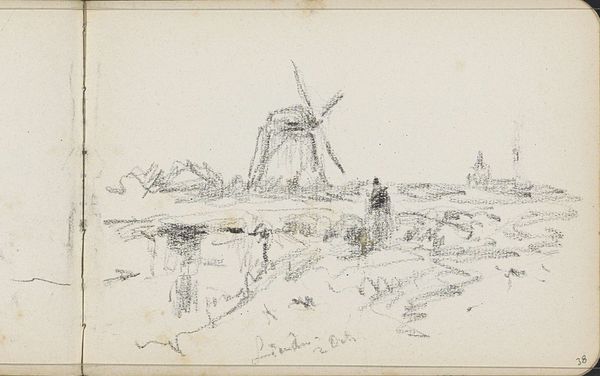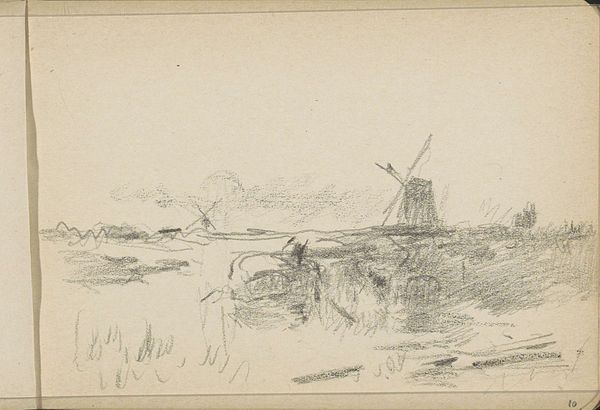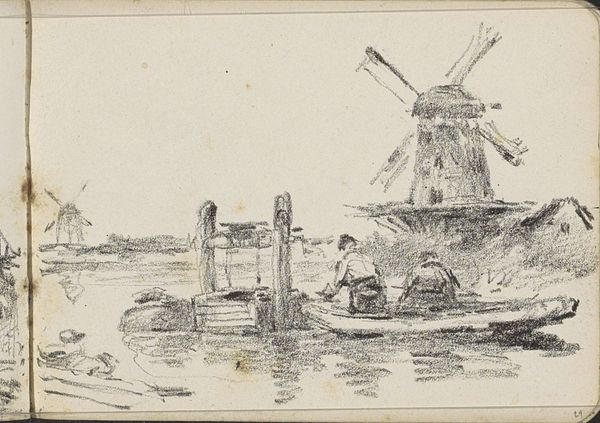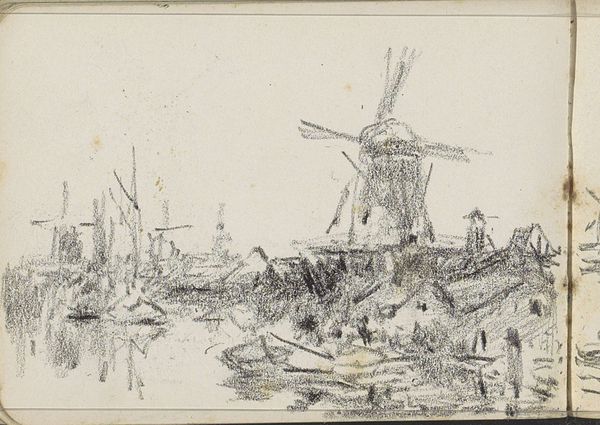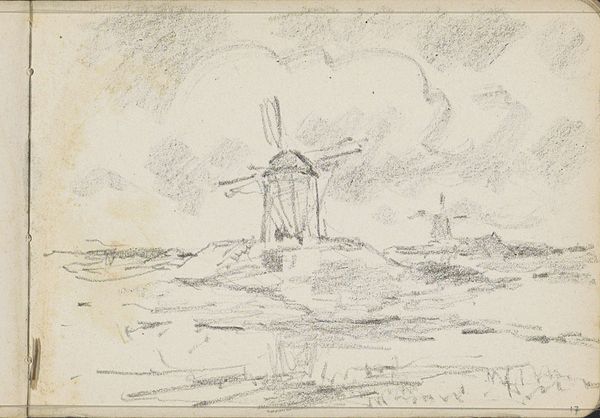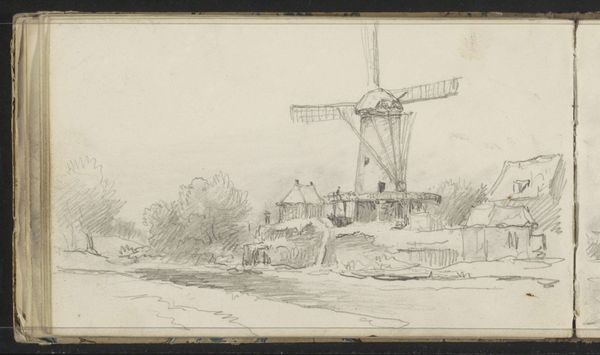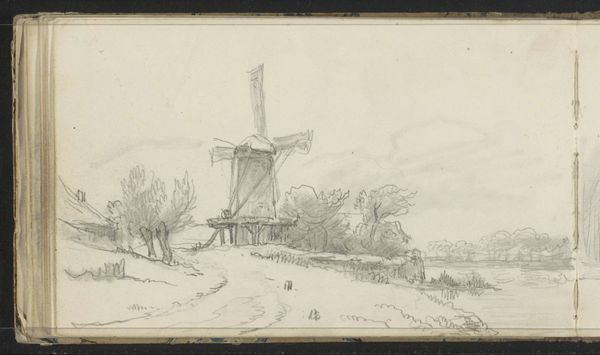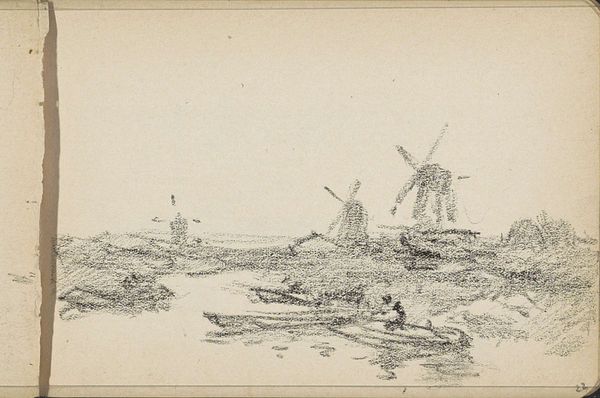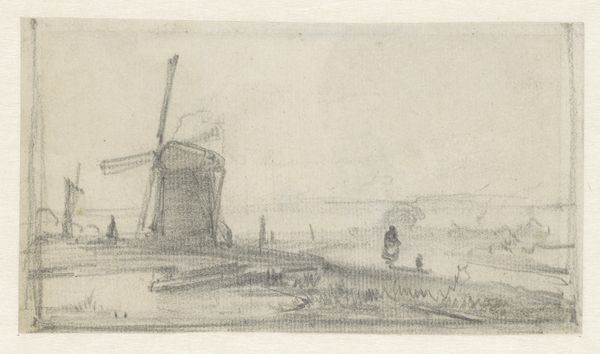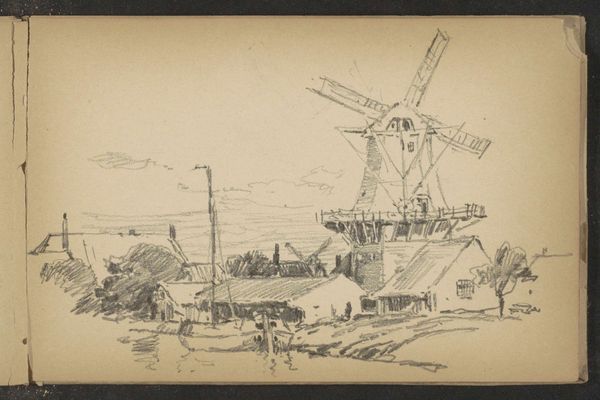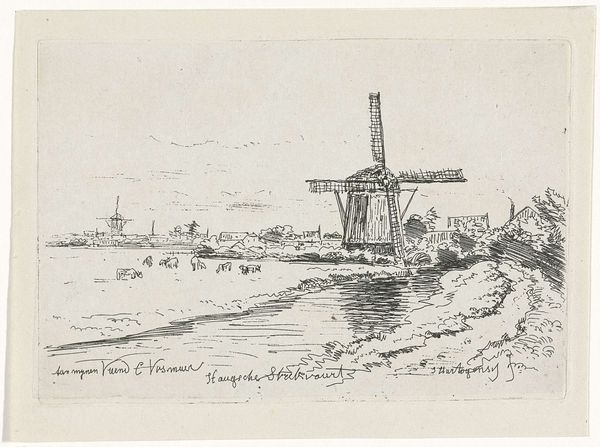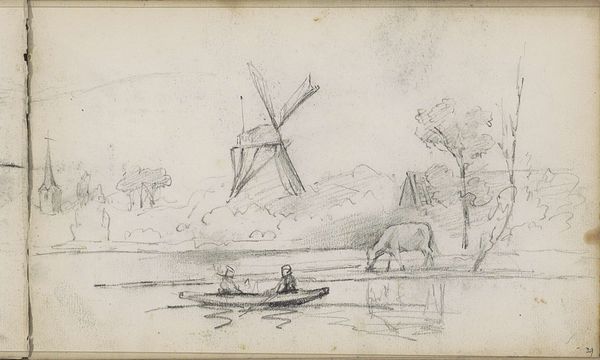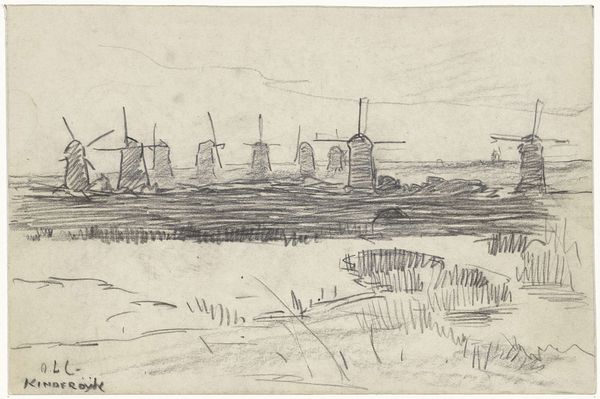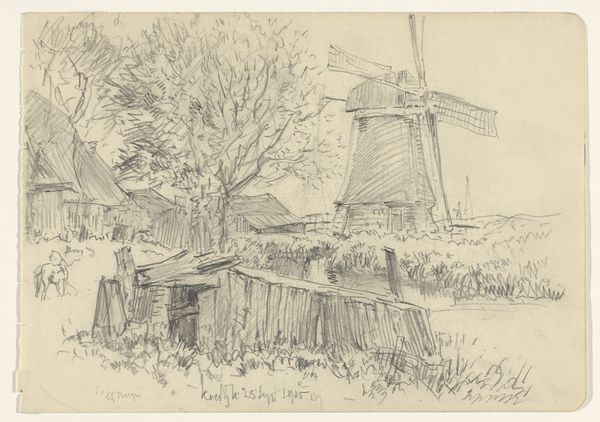
Dimensions: height 116 mm, width 162 mm
Copyright: Rijks Museum: Open Domain
Editor: Here we have "Molen De Zwaan te Lienden" by Willem Cornelis Rip, created in 1905. It's a pencil drawing, a quick sketch really. What strikes me is how such simple lines evoke such a distinct sense of place, but there's almost a melancholic mood to it. How do you read this drawing? Curator: It's fascinating how a seemingly straightforward landscape can speak to broader historical and cultural narratives. Windmills in Dutch art are rarely just windmills. Consider their socio-economic function: land reclamation, industry... They were vital to the Dutch identity, a symbol of their constant battle against the water, right? Editor: Absolutely! I see your point. The drawing also has an almost 'snapshot' quality too - like a fleeting impression. Curator: Exactly! Think about the period. Photography was emerging, influencing how artists saw and represented the world. There's a growing interest in capturing fleeting moments, the ephemerality of life. And this choice of pencil – was it simply the most practical choice for working "en plein air"? Editor: That's interesting – I hadn't considered the influence of photography that way. The accessibility of pencil makes total sense. Does the quick medium also impact the role of realism? Curator: Perhaps. However, even in its apparent simplicity, the drawing carries cultural weight. The public perception of the Netherlands as a seafaring power, industrial force... this would permeate throughout society, and inevitably find its expression in art, would you agree? Editor: That’s true! I had seen the drawing as more immediate, a personal expression maybe. Curator: It's both, isn't it? And by considering the historical forces at play, you appreciate the depth of its meaning. Editor: Yes, definitely. Thanks! That has really made me see the artwork through a different lens.
Comments
No comments
Be the first to comment and join the conversation on the ultimate creative platform.
